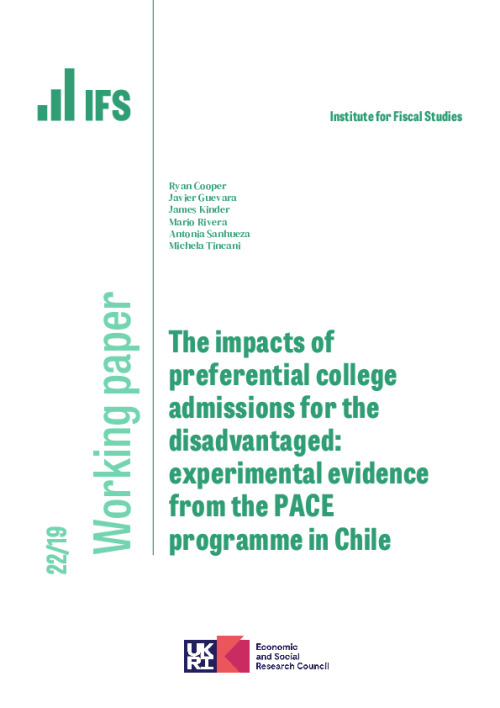Participation in university is highly unequal across socio-economic lines globally (UNESCO, 2017). This has led many governments and admission officers to introduce preferential college admissions for disadvantaged students. This report studies the impacts that preferential admissions can have on the higher-education admission, enrolment and retention of disadvantaged students.
We answer these research questions in the context of a programme called PACE (Programa de Acompañamiento y Acceso Efectivo a la Educación Superior, Programme for the Support and Effective Access to Higher Education) in Chile. PACE targets disadvantaged high schools and guarantees admission to a selective university for students who graduate in the top 15% of their school, waiving the requirement to obtain a sufficiently high score on the standardised entrance exam. Similar programmes, known as percentage plans, have been used in other countries (e.g., California, Florida and Texas have state-wide percentage plans).
Specifically, this report evaluates the impacts of the PACE programme on higher-education admissions and on higher-education enrolment of the disadvantaged students targeted by the programme, up to four years after the end of secondary education. To identify policy impacts, we exploit the randomized expansion of PACE that occurred in 2016. Our main findings are the following.
- Students from schools that were randomly allocated to be in PACE enrolled in the first year of higher education in 2018 at the same rate as students who were randomly allocated to be in the control group, but they were 3 percentage points more likely to enrol in a selective university and 3 percentage points less likely to enrol in professional higher-education institutes.
- The enrolment effects were concentrated among students who belonged to the top 15% of their school in terms of baseline grade point average (i.e., top-performing students) and among students from vocational high-school tracks.
- The effects persisted over time: in 2021, four years after leaving school, top-performing students from vocational schools randomly allocated to PACE were still more likely to be enrolled in a selective university than students from control schools.
- We did not find evidence of mis-match effects: students induced to enrol in more selective institutions by PACE did not drop out at a higher rate than the rate at which they would have dropped out from higher education in the absence of the PACE programme.
But despite the positive and persistent impacts on enrolment in selective universities, the effects on admissions to selective universities were between 33% and 55% below those expected when all PACE admissions are allocated. This raises the question of why some students did not take up PACE opportunities to pursue education in selective universities. Further studies are necessary to understand this phenomenon and to examine whether policy interventions can extend the positive impacts of PACE to more disadvantaged students.










